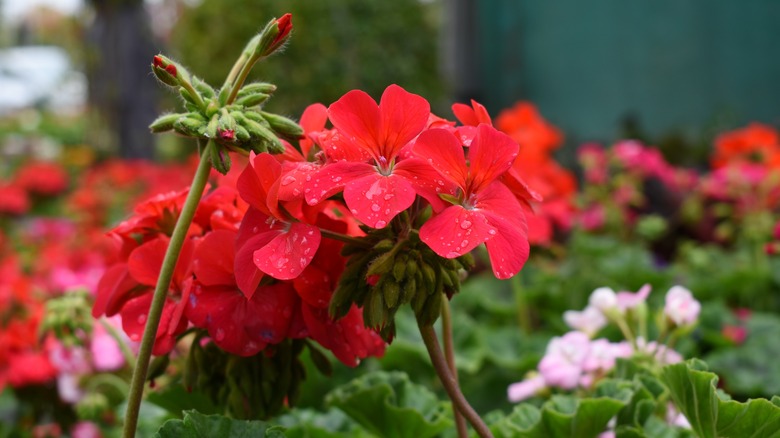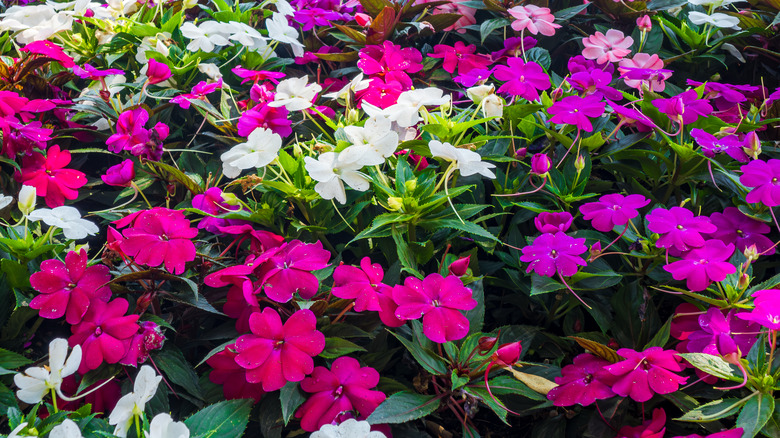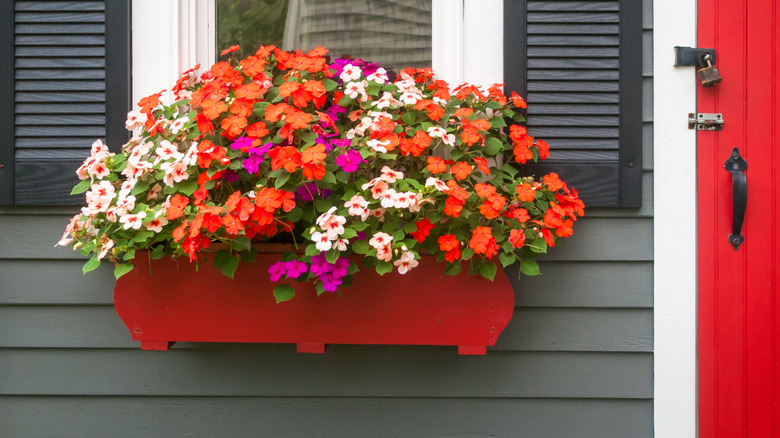Phase Out Your Geraniums And Replace Them With This Reliable Garden Flower
Geraniums are classic garden annuals for a reason. Not only do they have bright, cheerful blooms and attractive foliage, but they're also relatively easy to grow. Unfortunately, they require regular deadheading, and even worse, geraniums can develop black spots or die due to their vulnerability to diseases like wilt, leaf rot, and blight. If you've been let down by geraniums in the past and are searching for a different flower to take their place, look no further than gorgeous impatiens.
For anyone who has been gardening for a while, this suggestion might come as a surprise. You may have tried growing impatiens before but were forced to give up due to their vulnerability to downy mildew. Fortunately, newer varieties with more resistance to the disease are now available, making impatiens once again a reliable and beautiful garden favorite. Impatiens flowers are available in a range of colors, from reds and pinks to whites and purples, ensuring you'll find a color that will complement any garden design and style.
Caring for impatiens in the garden
There are a few different species of impatiens currently on the market today. There are, of course, the old-fashioned impatiens (Impatiens walleriana), which thrive in shady locations. While many of these are vulnerable to downy mildew, newer cultivars like 'Beacon' are resistant. There are also hybrid impatiens like 'SunPatiens', which can thrive in both sun and shade. Additionally, there are the New Guinea impatiens (Impatiens hawkeri), which flourish in part to full sun.
Regardless of the specific species and cultivar, be sure to grow your impatiens in fertile soil and water and fertilize them regularly. This is especially essential if you are growing your flowers in a container or planter. Impatiens are only perennial in zones 10 and higher, so they are treated as annuals in colder zones. Since impatiens aren't frost hardy, be sure to wait until after your last frost to put them outside. And if you want them to survive the winter, be sure to move them to a protected and brightly lit garage or basement before frost starts in the autumn. While impatiens are easily available in garden centers, many cultivars can also be grown from seeds if you prefer.
Using impatiens in your garden design
Impatiens are perfect for growing in hanging baskets, window boxes, and containers, but they also do well planted directly in the ground. Whether you decide to mass plant a single color of impatiens for a big visual impact or decide to interspace them with other flowers or foliage plants that thrive in similar conditions, impatiens are perfect workhorses in the garden. Depending on the species and cultivar of impatiens you opt for, they will pair well with different plants.
Combining different colors of impatiens together in a planter or basket is an easy way to create a vibrant display that can bloom all summer. Because most impatiens are relatively short, with some cultivars being able to be clipped at 6 inches tall, they're perfect for placing towards the front of garden beds where their beautiful flowers won't be blocked by taller plants. Impatiens don't benefit from deadheading, so they require little care other than regular watering and fertilizing.


